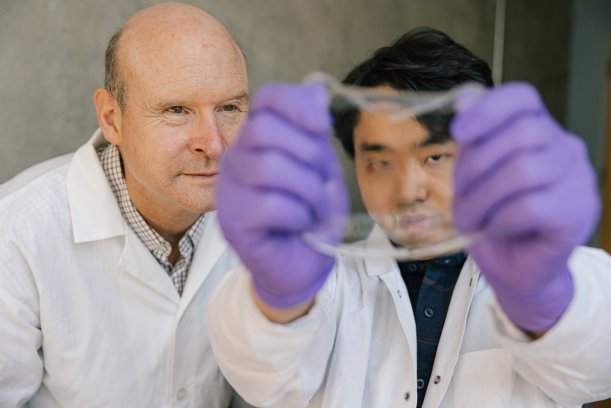
Three year programme extension for Made Smarter
The flexible, biocompatible hydrogels can be integrated into clothing or placed directly on the skin.

5th May 2022
Innovation in Textiles
|
British Columbia, Canada
In the quest to build smart skin that mimics the sensing capabilities of natural skin, ionic skins have shown significant advantages. They’re made of flexible, biocompatible hydrogels that use ions to carry an electrical charge. In contrast to smart skins made of plastics and metals, the hydrogels have the softness of natural skin. This offers a more natural feel to the prosthetic arm or robot hand they are mounted on, and makes them comfortable to wear.
These hydrogels can generate voltages when touched, but scientists did not clearly understand how – until a team of researchers at the University of British Columbia devised a unique experiment.
“How hydrogel sensors work is they produce voltages and currents in reaction to stimuli, such as pressure or touch – what we call a piezoionic effect,” said the study’s lead author Yuta Dobashi, who started the work as part of his master’s in biomedical engineering at UBC. “What we didn’t know exactly was how these voltages are produced.
Working under the supervision of UBC researcher Dr John Madden, Dobashi devised hydrogel sensors containing salts with positive and negative ions of different sizes. He and collaborators in UBC’s physics and chemistry departments applied magnetic fields to track precisely how the ions moved when pressure was applied to the sensor.
“When pressure is applied to the gel, it spreads out the ions in the liquid at different speeds, creating an electrical signal,” said Dobashi. “Positive ions, which tend to be smaller, move faster than larger, negative ions. This results in an uneven ion distribution which creates an electric field, which is what makes a piezoionic sensor work.”
The researchers say this new knowledge confirms that hydrogels work in a similar way to how humans detect pressure, which is also through moving ions in response to pressure, inspiring potential new applications for ionic skins.
“The obvious application is creating sensors that interact directly with cells and the nervous system, since the voltages, currents and response times are like those across cell membranes,” said Dr Madden, an electrical and computer engineering professor at UBC’s faculty of applied science. “When we connect our sensor to a nerve, it produces a signal in the nerve. The nerve, in turn, activates muscle contraction.
“You can imagine a prosthetic arm covered in an ionic skin. The skin senses an object through touch or pressure, conveys that information through the nerves to the brain, and the brain then activates the motors required to lift or hold the object. With further development of the sensor skin and interfaces with nerves, this bionic interface is conceivable.”
Another application is a soft hydrogel sensor worn on the skin that can monitor a patient’s vital signs while being totally unobtrusive and generating its own power.
“We can imagine a future where jelly-like ‘iontronics’ are used for body implants,” Madden said. “Artificial joints can be implanted, without fear of rejection inside the human body. Ionic devices can be used as part of artificial knee cartilage, adding a smart sensing element. A piezoionic gel implant might release drugs based on how much pressure it senses, for example.”
He added that the market for smart skins is estimated at $4.5 billion and it continues to grow.
“Smart skins can be integrated into clothing or placed directly on the skin, and ionic skins are one of the technologies that can further that growth.”

Business intelligence for the fibre, textiles and apparel industries: technologies, innovations, markets, investments, trade policy, sourcing, strategy...
Find out more